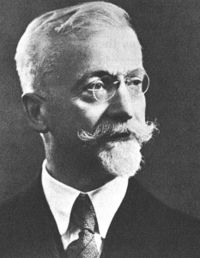4D fully covariant formulation of non-relativistic multifluid hydrodynamics
With Brandon Carter, we constructed a 4D fully covariant formulation of
non-relativistic hydrodynamics based on a constrained action principle. Our main motivation was the development of neutron-star models taking into account superfluidity and superconductivity of the interior constituents, elasticity of the solid crust, and the presence of high magnetic fields. Although less accurate than a fully relativistic description, a Newtonian treatment of neutron stars can provide valuable insight at a much reduced computational cost. Our formalism, however, is very general and thus could be also applied to study the dynamics of various laboratory (super)fluid systems.
More details can be found in the following series of papers:
Carter and Chamel, Int. J. Mod. Phys. D 13 (2004), 291-325. PDF
Carter and Chamel, Int. J. Mod. Phys. D 14 (2005), 717-748. PDF
Carter and Chamel, Int. J. Mod. Phys. D 14 (2005), 749-774. PDF
We later extended the formalism to account for elasticity and magnetic fields:
Carter, Chachoua and Chamel, Gen. Relativ. Gravit. 38 (2006), 83-119. PDF

Elie Cartan
Why working in 4D instead of the usual 3+1?
A 4D approach allows for a direct comparison between the relativistic and
non-relativistic cases. It also sheds a new light on Newtonian
mechanics following the steps of the French mathematician Elie Cartan.
He demonstrated in the 1920's that the Newtonian theory of
gravitation can be expressed in geometric terms as in General
Relativity. His work also revealed that the gravitational field is not
well defined, but is subject to a kind of gauge symmetry which
preserves the Newtonian space-time curvature. Some laws of conservation
appear naturally in this 4D framework, using Cartan exterior calculus and
differential geometric concepts such as Killing vectors.
Besides the equations of hydrodynamics look much simpler than in the traditional approach!
Why do you constrain the variational principle?
The basic variables are the 4-current vectors (particle number density
times 4-velocity) of the various constituents. Unconstrained
variations of the action with respect to these currents do not lead to
the right equations. One simply gets that the momentum of each fluid
vanishes. The idea is then to restrict the variations of the currents
to those corresponding to displacements of the fluid
particle trajectories.
Why considering multifluid systems?
Usually different velocity fields cannot coexist inside the same fluid
due to viscosity which tends to suppress relative motions. However
superfluids like helium II have zero viscosity! In a superfluid
mixture, like helium 3-helium 4 for instance, each superfluid can thus
flow with its own velocity. The different superfluids are not
completely independent because of the interactions between the
particles. This leads to non-dissipative Andreev-Bashkin entrainment
effects, whereby the momentum of one fluid is a linear combination of
the velocities of all fluids. Microscopic calculations of dense nuclear
matter suggest that the interior of neutron stars may contain
various kinds of superfluids. Entrainment effects also arise when a fluid
is subject to a magnetic field
and/or is flowing through a solid like electrons in ordinary metals... or
free neutrons in neutron star crust!
Why developing a variational principle?
The action principle provides a very powerful theoretical framework for
deducing the dynamical equations of very complicated systems. In
particular, we have been interested in situations where several
dynamical components can coexist like in superfluid mixtures. The traditional approach
to superfluid hydrodynamics blurring the distinction between velocity and
momentum makes it difficult to adapt and extend Tisza-Landau's original two
fluid model.
Where can I find more about Elie Cartan?
His biography can be found here.
Standard textbooks on General Relativity usually briefly mention his
work. Nevertheless I think it is quite instructive to read his original
papers (provided you know French!). His papers are freely
accessible on the NUMDAM web site:
Sur les variétés
à connexion affine et la théorie de la relativité
généralisée (première partie). Annales
scientifiques de l'Ecole Normale Supérieure Sér. 3, 40
(1923), p. 325-412
pdf
Sur les variétés à connexion affine
et la théorie de la relativité généralisée (première partie). Annales
scientifiques de l'Ecole Normale Supérieure Sér. 3, 41 (1924),
p. 1-25 pdf
Sur les variétés à connexion affine
et la théorie de la relativité généralisée (deuxième partie). Annales
scientifiques de l'Ecole Normale Supérieure Sér. 3, 42 (1925),
p. 17-88 pdf
Back to main page
